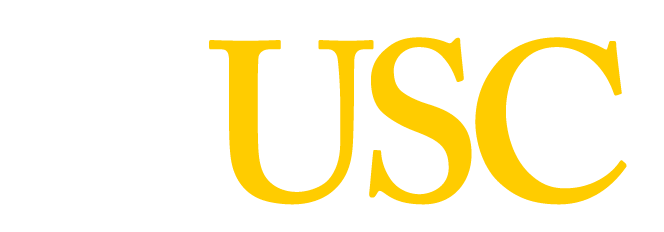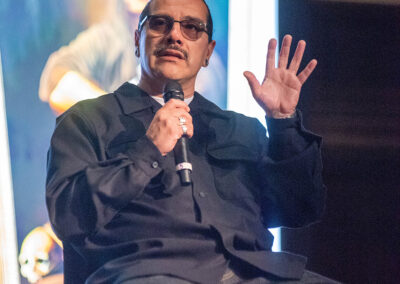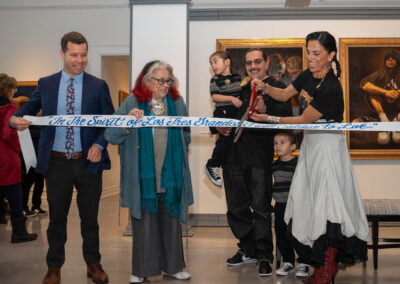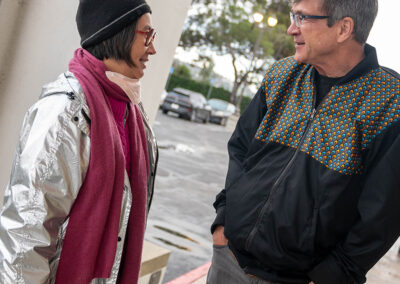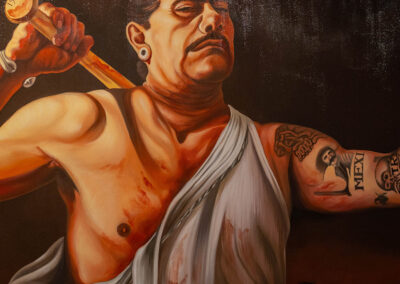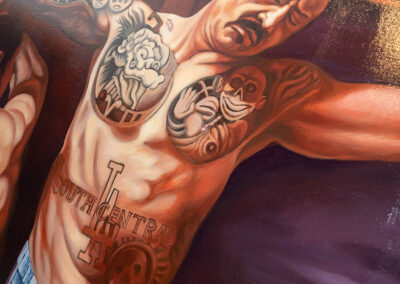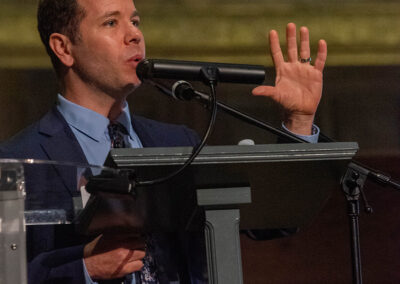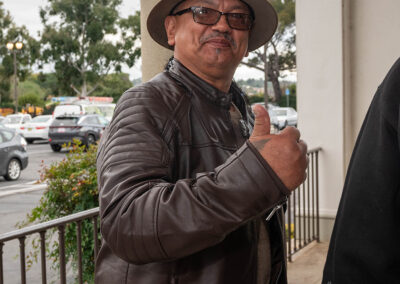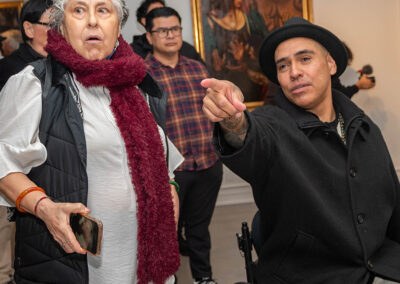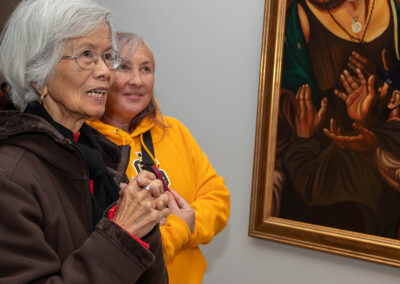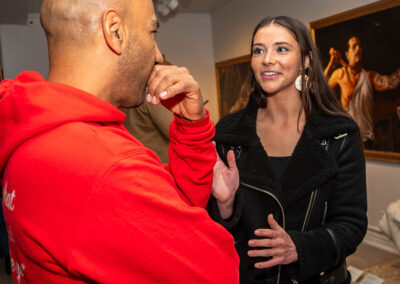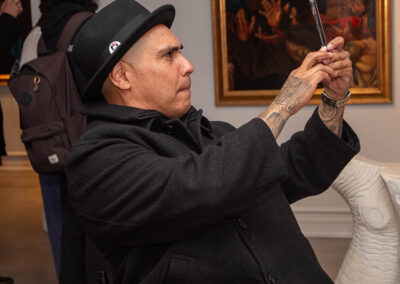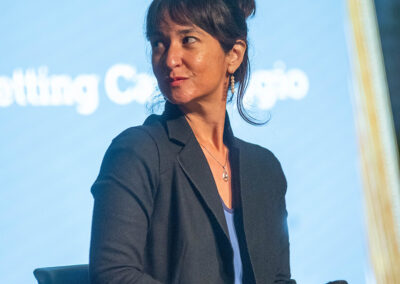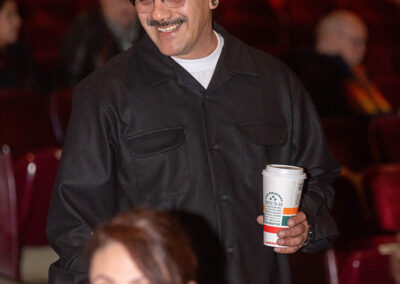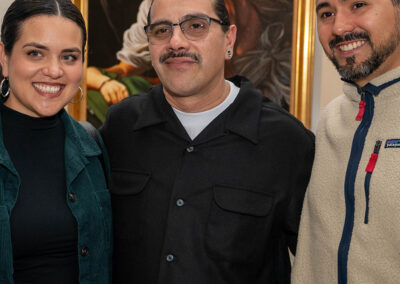CARA De VAGO: Incarceration to Artistic Resurrection
2024 NEA National Heritage Fellow Fabian Debora Exhibits at Forest Lawn Museum in Glendale, CA.
CARA De VAGO is a new series of thirteen works by Debora, who audaciously has formed a kinship to Caravaggio, the 17th century artist whose life trajectory extended beyond stylistic parallels.
The groundbreaking art project has been supported by Collaborations in History, Art, Religion and Music (CHARM), through a generous grant from an anonymous foundation. The exhibition is hosted by the Forest Lawn Museum, where it will be on view March 2 – 15, 2024. Baroque art specialist and USC Dornsife Professor Hector Reyes, Ph.D., leads CHARM’s partnership with Debora.
“Fabian Debora’s Cara de Vago paintings are truly remarkable, at once piercingly personal and generously universal,” said USC Dornsife Professor of Art History and CHARM founder Lisa Pon, Ph.D. “Mr. Debora simultaneously looks back at art from the Italian Baroque period with an acute eye, and paints for today and a hopeful tomorrow. These are paintings that can open conversations about and across differences, conversations we urgently need now.”
Debora spent much of his childhood in Boyle Heights and is a former gang member who has overcome battles with poverty, drug addiction and incarceration. He has successfully channeled his creative energy into creating public art and arts education programs in East Los Angeles.
Today, Debora speaks profoundly on his experiences with gang life due to complexity of traumas, lack of access to resources, and inequity as a first-generation Mexican American Chicano.
By contrast, Caravaggio was considered the “bad boy” of the world of art – constantly in trouble and even imprisoned; it is precisely his problems that make him a figure that is more relatable than other masters. Caravaggio’s troubled past, and his willingness to paint his marginalized surroundings using as models people in his everyday life, made him relatable to Debora.
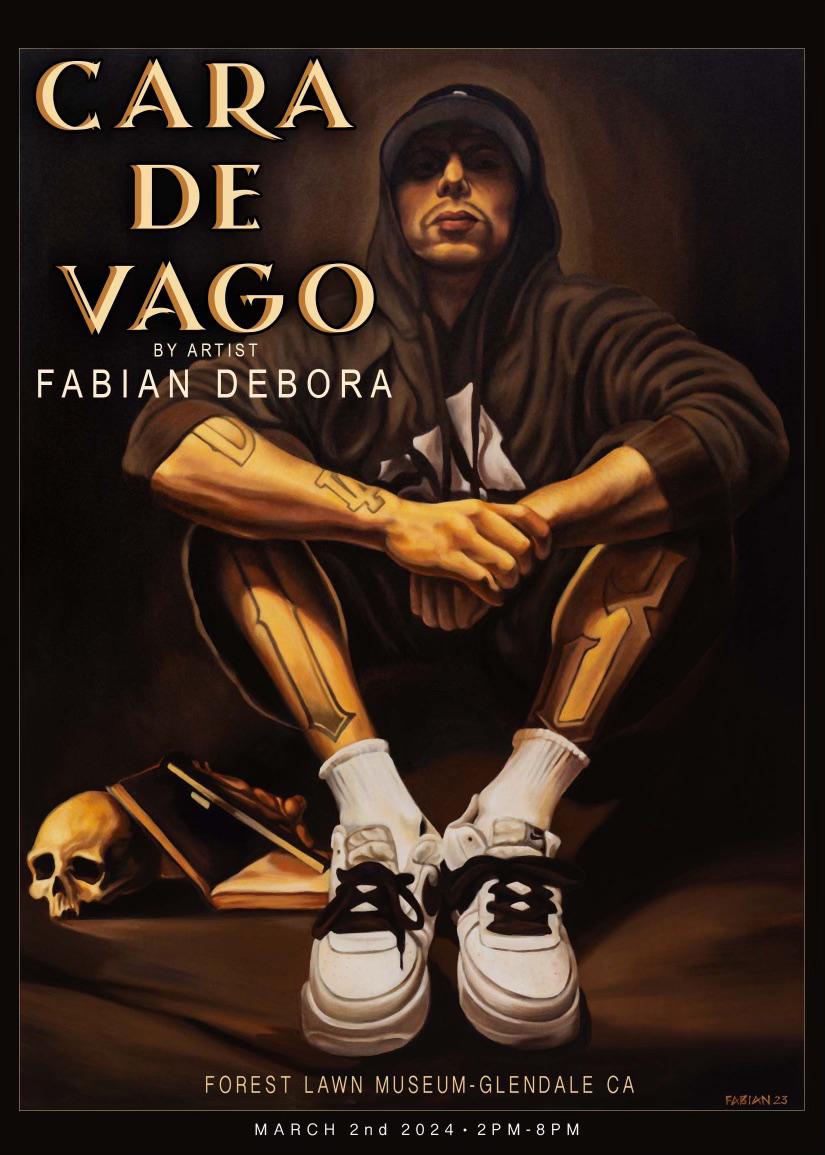
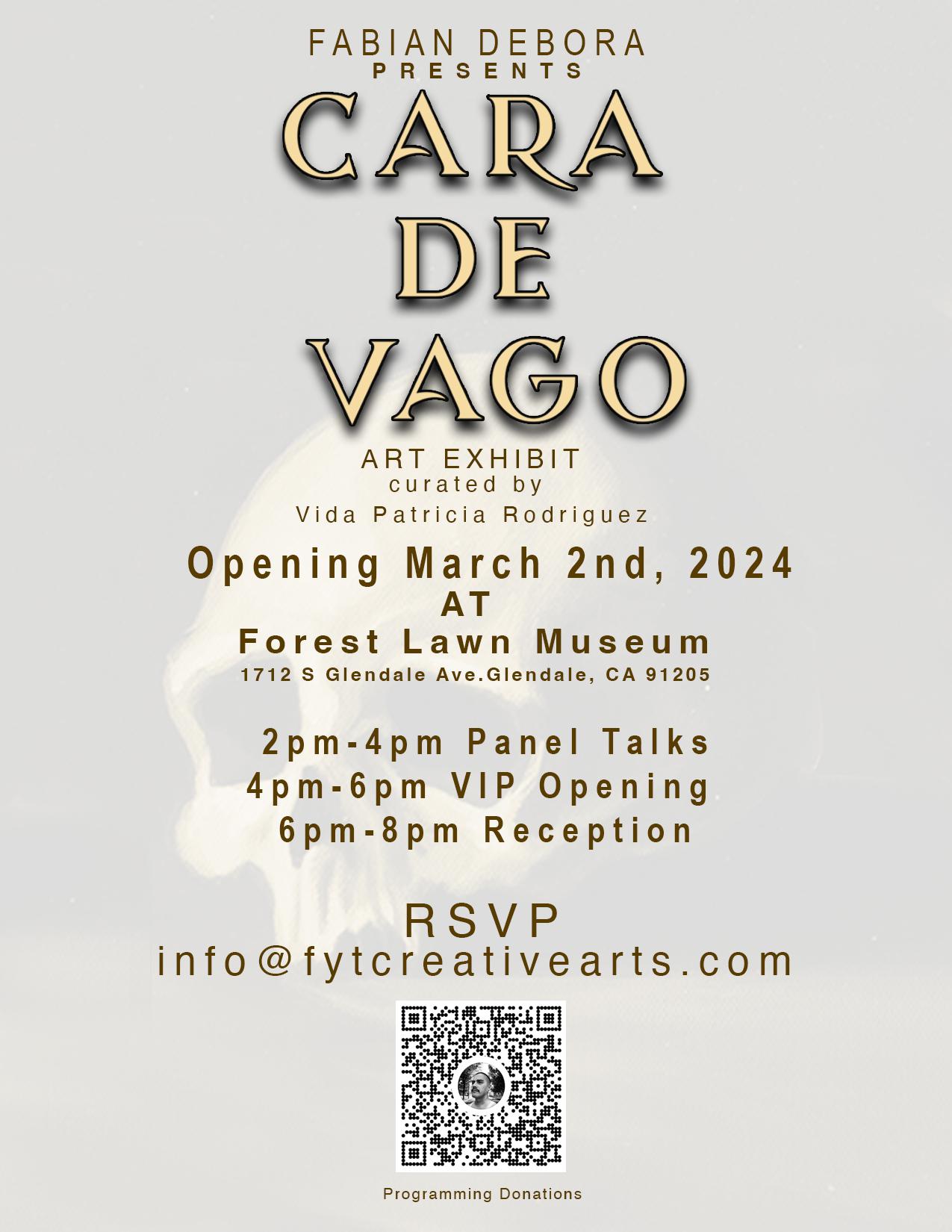
Like Caravaggio, Debora represents those who survived under the confinements of these systemic issues, as one must decide how to survive under these pervasive social structures then and continuing today. The 80s was a decade suffering of a crack cocaine epidemic resulting in high violence, and crime. Gangs were the only refuge at the time for Debora. Amidst the darkness, Debora revered the spiritual, and religious connections he developed through prayer within this subculture, as here, he was able to see the beauty amongst those to whom the world deemed invisible. This signified hope for Fabian and his community, thus propelling Debora to unfold this story from his memories of gang life onto canvas. Beyond the similarities to Caravaggio’s life story, his style, and his iconography, Debora assumes responsibility to restore the image of the gang member back to its humanity.
Debora invites you to take a seat at his table as he brings the spiritual and religious common threads that weave our relationship to one another for a conversation as brothers and sisters navigating this journey of life and self-exploration. It is said that God lives amongst the outcast and so can you. If we are the children of God then it is not through humanity we uncover ourselves.
Debora states: “I am moved at the gesture provided by Forest Lawn of hosting CARA de VAGO, as it affirms its place in this sanctuary, symbolic to the celebration of life and death, perfectly aligned with this narrative that we are all one of the same.”
Forest Lawn Museum’s innate relevance to CARA De VAGO is that this prolific body of works echoes the permanent collections within Forest Lawn Museum, which includes re-creations of centuries old Italian works of art by Michelangelo, Leonardo, and other iconic artists.
Opening Day Saturday, March 2, 2024
2 p.m. – 4 p.m. Panel Talks
4 p.m. – 6 p.m. VIP Opening & Press Preview
6 p.m. – 8 p.m. Reception
PANEL SPEAKERS
Gregorio Luke – an expert on Mexican, Latin American art & Culture and the former Director of the Museum of Latin American Art, Consul of Cultural Affairs of Mexico in Los Angeles and the First Secretary of the embassy of Mexico in Washington D.C.
Sophia Quach-McCabe, Ph.D, Italian Renaissance scholar and curator of Renaissance and Contemporary Art.
Jenny Lin, Ph.D, Associate Professor of Critical Studies, USC Roski School of Art and Design
Hector Reyes, Ph.D, Associate Professor (Teaching) of Art History at the USC Dornsife College of Letters, Arts and Sciences.
Panel Moderator: James Fishburne, Ph.D, Director of Forest Lawn Museum
Photos from Cara De Vago Opening Night Exhibtion.
Photos: Anekin Navarr
Leuzinger High Multimedia Careers Academy
Los Angles Times Review of exhibition
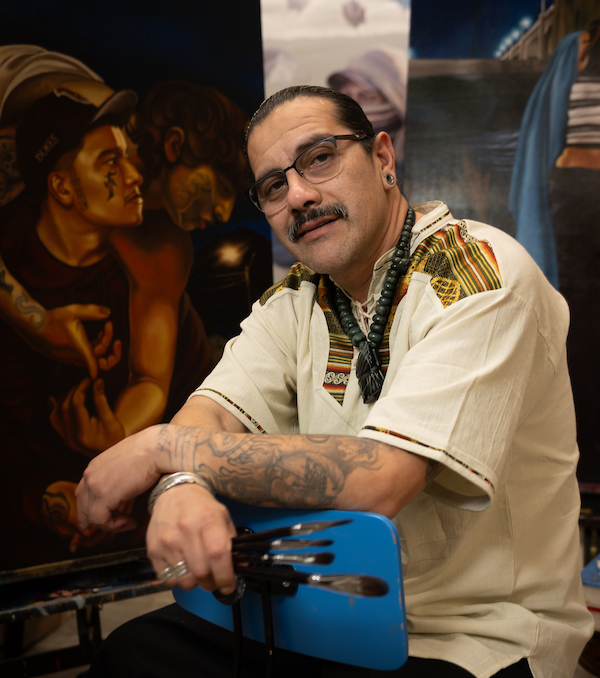
About Fabian Debora:
Fabian Debora is an award winning & internationally renowned artist based in Los Angeles, California. A self-taught artist, he founded and is the director of HOMEBOY Industries Arts Academy in Boyle Heights, Calif. Fabians’ work is housed in the private collections of such prestigious public institutions as LACMA and the Getty Center in Los Angeles. His work has been exhibited in numerous group-shows, art fairs, museums, and charity benefits. He is a Master muralist & hyperrealist artist. His works employ traditional classical techniques. In 2024, he was awarded the National Heritage Fellowship by the National Endowment for the Arts.
You can view images of Fabians works at https://www.fabiandebora.com
Debora’s undying devotion to be of service is evident in his extensive contribution to the restoration of our youth through the power of art, while preserving cultural identities of the Chicano movement.
His expertise has long been sculpting in the service of community as a counselor and Director of Substance Abuse Services and Programming for over two decades. Beginning with Eastlake Central Juvenile Hall in Lincoln Heights, L.A. (inmate mural titled Pivot Point of Life). Mentor at Homeboy Industries in Los Angeles for a decade. And formerly, the Community Connection Director at Arts for Incarcerated Youth Network-As well as teaching artist for ACTA Alliance of traditional Arts, bringing arts to adult correctional facilities. In addition, Director of Latino Producers Action Network (LPAN); as well as, instructor for community artists and students throughout Boyle Heights, the greater Los Angeles area, and abroad. Fabian Debora has a relentless and unwavering commitment to amplify his artistic voice through service in community is unparalleled. He is a leader with a vision to inspire and prepare young generations of artists, just as his mentors have done for him — by gifting the power of the love for the arts.
Hyper-Realism in the context of “Cara de Vago” is not merely a contemporary art style or a re-imagining of Caravaggio’s work; it is also a strong statement about the description of reality, especially of its spiritual, neglected, sublime, overlooked, and painful dimensions.
As Fabian states: “As I continue to peel the layers, I stand in the belief of my responsibility as an artist to help remove all stereotypes of subcultures through identity, culture, religions, and gender.” And by this “In the spirit of the Tres Grandes, I will continue to live.”

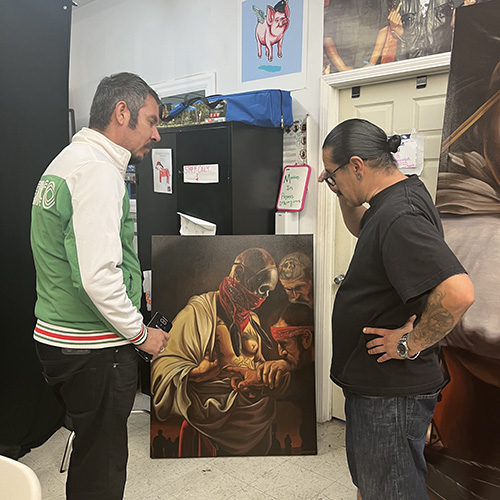
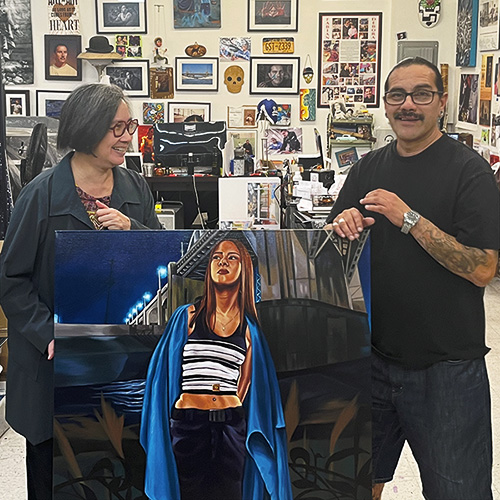
Homeboy Academy photos by Leslie Ramirez of Leuzinger High School’s Multimedia Careers Academy
